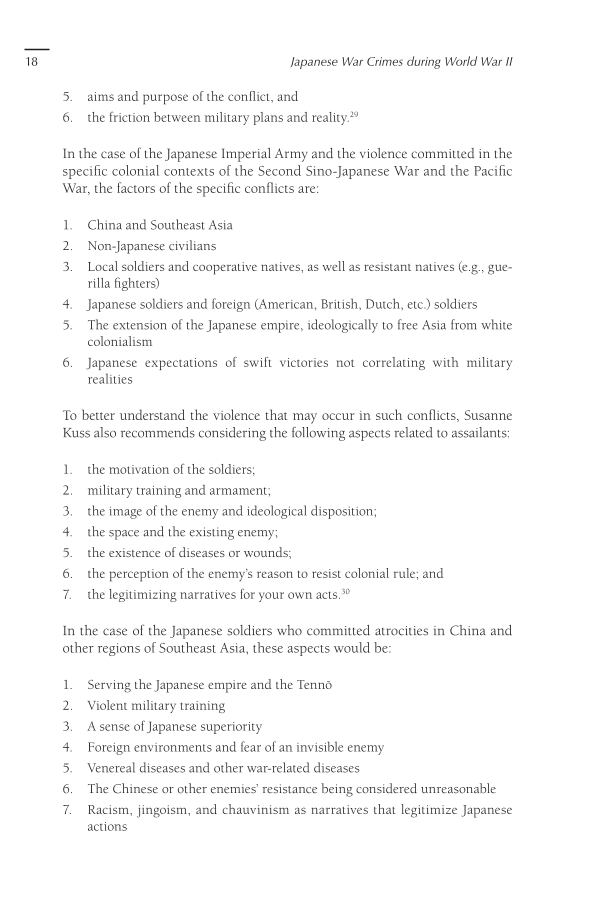18 Japanese War Crimes during World War II 5. aims and purpose of the conflict, and 6. the friction between military plans and reality.29 In the case of the Japanese Imperial Army and the violence committed in the specific colonial contexts of the Second Sino-Japanese War and the Pacific War, the factors of the specific conflicts are: 1. China and Southeast Asia 2. Non-Japanese civilians 3. Local soldiers and cooperative natives, as well as resistant natives (e.g., gue- rilla fighters) 4. Japanese soldiers and foreign (American, British, Dutch, etc.) soldiers 5. The extension of the Japanese empire, ideologically to free Asia from white colonialism 6. Japanese expectations of swift victories not correlating with military realities To better understand the violence that may occur in such conflicts, Susanne Kuss also recommends considering the following aspects related to assailants: 1. the motivation of the soldiers 2. military training and armament 3. the image of the enemy and ideological disposition 4. the space and the existing enemy 5. the existence of diseases or wounds 6. the perception of the enemy’s reason to resist colonial rule and 7. the legitimizing narratives for your own acts.30 In the case of the Japanese soldiers who committed atrocities in China and other regions of Southeast Asia, these aspects would be: 1. Serving the Japanese empire and the Tennō 2. Violent military training 3. A sense of Japanese superiority 4. Foreign environments and fear of an invisible enemy 5. Venereal diseases and other war-related diseases 6. The Chinese or other enemies’ resistance being considered unreasonable 7. Racism, jingoism, and chauvinism as narratives that legitimize Japanese actions
Document Details My Account Print multiple pages
Print
You have printed 0 times in the last 24 hours.
Your print count will reset on at .
You may print 0 more time(s) before then.
You may print a maximum of 0 pages at a time.

































































































































































































































